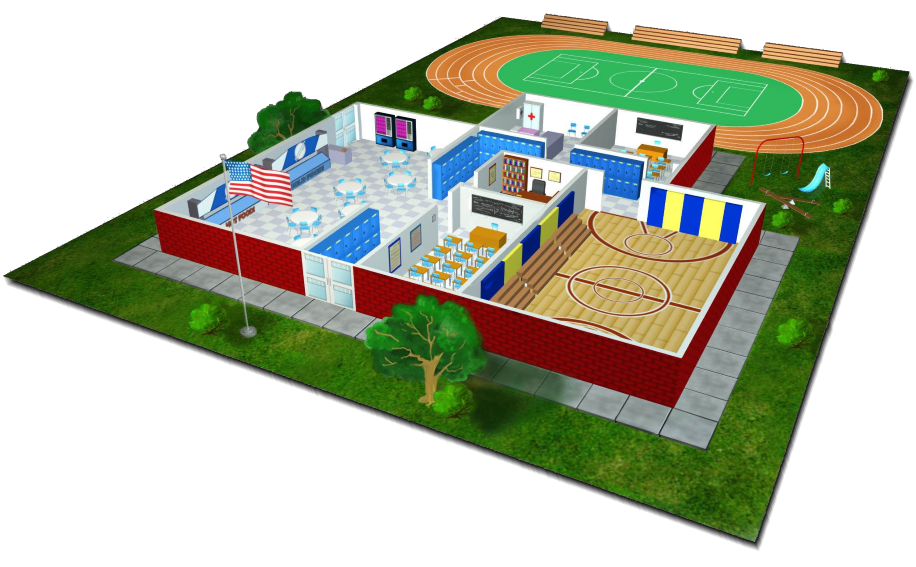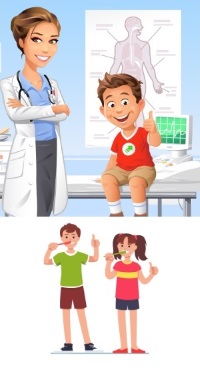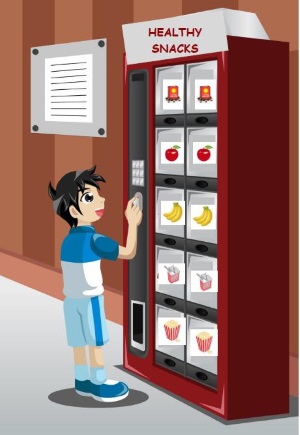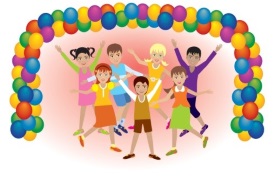
POLICY GUIDANCE
Explore the interactive resource of the school environment below to access examples of model and sample policies for Nutrition, Physical Education and Physical Activity, and the Management and Care Needs of Students with Chronic Conditions.
Disclaimer: This school health resource guide was produced under a cooperative agreement with the Centers for Disease Control and Prevention (CDC). Its contents are solely the responsibility of the authors and do not necessarily represent the official views of NACDD or CDC.

Physical Activity Access and Outreach

Physical activity before and after school provides opportunities for all students, including those with special needs, to: 1) practice what they have learned in physical education, 2) work toward the nationally recommended 60 minutes of daily physical activity, 3) become more adequately prepared for learning, 4) engage in safe, social, and supervised activities, and 4) identify activities they enjoy and might engage in long term. Examples of before- and after-school physical activity offerings might include a walking and biking to school program, physical activity clubs and intramural programs (e.g., programs that are voluntary, student-centered, and give equal opportunity for all students to participate), informal recreation or play on school grounds, physical activity in school based child care programs, integrating physical activity in homework during out of school hours, and interscholastic sports.
Community involvement allows maximum use of school and community resources and creates a connection between school and community-based physical activity opportunities. Before- and after-school physical activity programs can be coordinated with community-based organizations (e.g., YMCAs, community parks and recreation) and delivered in school settings. Community organizations can also establish joint-use or shared use agreements with schools (from CDC Comprehensive School Physical Activity Programs: A Guide for Schools).
Model Joint Use Agreements Resources
Model Open Use Policy for School Districts
Model and Sample Policies – Physical Activity Access and Outreach
Competitive Foods and Beverages
 The Healthy Hunger-Free Kids Act of 2010 directed the USDA to establish nutrition standards for all foods and beverages sold to students in school during the school day including competitive foods.
The Healthy Hunger-Free Kids Act of 2010 directed the USDA to establish nutrition standards for all foods and beverages sold to students in school during the school day including competitive foods.
Competitive foods and beverages are those that are sold at school outside of and in competition with the federally reimbursable meal programs. Examples of competitive foods and beverages include those sold during the school day in vending machines (that are not reimbursable meals), student stores, á la carte items sold by the school food service department, or as fundraisers.
Model and Sample Policies – Competitive Foods and Beverages
Centers for Disease Control and Prevention Competitive Foods and Beverages in U.S. Schools: A State Policy Analysis
Management and Care of Chronic Conditions
 The management and care of chronic conditions in the school setting is a complex process that requires comprehensive policies and procedures across school districts and within school buildings. Policies and procedures cover a wide range of topics such as:
The management and care of chronic conditions in the school setting is a complex process that requires comprehensive policies and procedures across school districts and within school buildings. Policies and procedures cover a wide range of topics such as:
- Identification and tracking of students with chronic conditions (e.g. asthma, food allergies, diabetes, epilepsy or seizure disorder, and other chronic conditions related to activity, diet, and weight).
- Responding to the needs and emergency care of students with chronic conditions, including administration of medication by staff and self-administration of medication.
- Professional development and education for all members of the school environment.
In addition, this NACDD school health resource guide incorporates oral health conditions, e.g., dental caries (tooth decay) as a chronic condition.
Model and Sample Policies and Procedures – Management and Care of Chronic Conditions
Classroom Celebrations & Rewards
 There are many reasons to have celebrations in schools, and those celebrations can reinforce healthy eating habits and promote healthy choices. Celebrations can also be non-food focused and provide opportunities for physical activity and play.
There are many reasons to have celebrations in schools, and those celebrations can reinforce healthy eating habits and promote healthy choices. Celebrations can also be non-food focused and provide opportunities for physical activity and play.
Model and Sample Policies - Classroom Celebrations and Rewards
From Alliance for a Healthier Generation Model Wellness Policy:
All foods offered on the school campus will meet or exceed the USDA Smart Snacks in School nutrition standards [or, if the state policy is stronger, "will meet or exceed state nutrition standards"], including through:
- Celebrations and parties. The district will provide a list of healthy party ideas to parents and teachers, including non-food celebration ideas. Healthy party ideas from the Alliance for a Healthier Generation and from the USDA .
- Classroom snacks brought by parents. The District will provide to parents a list of foods and beverages that meet Smart Snacks nutrition standards; and
- Rewards and incentives. The District will provide teachers and other relevant school staff a list of alternative ways to reward children . Foods and beverages will not be used as a reward, or withheld as punishment for any reason, such as for performance or behavior.
From Rudd Center for Food Policy and Obesity, Model District School Wellness Policy: - Celebrations that involve food will be limited to one per month. Only foods that meet district’s nutrition standards will be allowed at school celebrations
- Parents will be made aware in advance of when a celebration with food is taking place and what is to be served
- Non-food celebrations will be promoted and a list of ideas will be available to parents and teachers
Marketing and Promotion

Food and beverage marketing often appears throughout schools in the form of posters, vending machine fronts, in-school television advertisements, school newspapers, textbook covers, sports equipment, and scoreboards. Many foods marketed in schools are of poor nutritional quality. The Centers for Disease Control and Prevention, Institute of Medicine, and American Academy of Pediatrics recommend that school districts implement policies and practices to promote foods and beverages that support healthful diets (an excerpt from the CDC and the Robert Wood Johnson Foundation-supported Bridging the Gap (BTG)'s brief Strategies to Improve Marketing and Promotion of Foods and Beverages at School )
Model Policy Language for Limiting Unhealthy Marketing to Students
Access to Water
 Providing access to drinking water gives students a healthy alternative to sugar-sweetened beverages. It helps to increase students' overall water consumption, maintain hydration, and reduce energy intake if substituted for sugar-sweetened beverages. Adequate hydration also may improve cognitive function in children and adolescents.
Providing access to drinking water gives students a healthy alternative to sugar-sweetened beverages. It helps to increase students' overall water consumption, maintain hydration, and reduce energy intake if substituted for sugar-sweetened beverages. Adequate hydration also may improve cognitive function in children and adolescents.
Model and Sample Policies - Access to Water
From Alliance for a Healthier Generation Model Wellness Policy:
- To promote hydration, free, safe, unflavored drinking water will be available to all students throughout the school day and throughout every school campus. The District will make drinking water available where school meals are served during mealtimes.
- Water cups/jugs will be available in the cafeteria if a drinking fountain is not present.
- All water sources and containers will be maintained on a regular basis to ensure good hygiene standards. Such sources and containers may include drinking fountains, water jugs, hydration stations, water jets, and other methods for delivering drinking water.
- Students will be allowed to bring and carry (approved) water bottles filled with only water with them throughout the day.
State Policy Example:
California Chapter 558 of the Statutes of 2010 (Senate Bill 1413, Leno) establishes California Education Code (EC) Section 38086, which requires school districts to provide access to free, fresh drinking water during meal times.
School Fundraisers
 The Healthy Hunger-Free Kids Act of 2010 directed the USDA to establish nutrition standards for all foods and beverages sold to students in school during the school day, including foods sold through school fundraisers.
The Healthy Hunger-Free Kids Act of 2010 directed the USDA to establish nutrition standards for all foods and beverages sold to students in school during the school day, including foods sold through school fundraisers.
Model and Sample Policies - School Fundraisers
From Alliance for a Healthier Generation Model Wellness Policy:
Foods and beverages that meet or exceed the USDA Smart Snacks in Schools nutrition standards may be sold through fundraisers on the school campus* during the school day*. The District will make available to parents and teachers a list of healthy fundraising ideas [examples from the Alliance for a Healthier Generation and the USDA.
[Given the pervasiveness of food fundraisers in many schools and the wide availability of profitable, healthy fundraising options, additional policy language is encouraged:
- Schools will use only non-food fundraisers, and encourage those promoting physical activity (such as walk-a-thons, Jump Rope for Heart, fun runs, etc.).
- Fundraising during and outside school hours will sell only non-food items or foods and beverages that meet or exceed the Smart Snacks nutrition standards. This may include but is not limited to, donation nights at restaurants, cookie dough, candy and pizza sales, market days, etc.]
State Policy Example:
...all beverages and snack foods provided by or sold in public schools and public charter schools or provided by organizations participating in the Afterschool Meal Program, whether through vending machines, fundraisers, snacks, after-school meals, or other means, shall meet the requirements of the United States Department of Agriculture's HealthierUS School Challenge program at the Gold Award Level for competitive foods, as may be revised from time to time and notwithstanding any termination of the HealthierUS School Challenge program.
Healthy Eating Research and Bridging the Gap School Fundraisers: Positive Changes in Foods Sold, but Room for Improvement Remains
Multi-Component Physical Education
 Establishing and implementing high-quality physical education (PE) can provide students with the appropriate knowledge, skills, behaviors, and confidence to be physically active for life. Physical education is an academic subject and serves as the foundation of a Comprehensive School Physical Activity Program (CSPAP). A CSPAP reflects strong coordination across all of these components: quality physical education, physical activity before, during, and after school, staff involvement, and family and community engagement (from CDC Strategies to Improve the Quality of Physical Education )and and Comprehensive School Physical Activity Programs: A Guide for Schools).
Establishing and implementing high-quality physical education (PE) can provide students with the appropriate knowledge, skills, behaviors, and confidence to be physically active for life. Physical education is an academic subject and serves as the foundation of a Comprehensive School Physical Activity Program (CSPAP). A CSPAP reflects strong coordination across all of these components: quality physical education, physical activity before, during, and after school, staff involvement, and family and community engagement (from CDC Strategies to Improve the Quality of Physical Education )and and Comprehensive School Physical Activity Programs: A Guide for Schools).
SHAPE America Components of a Multi-Component Physical Education Policy
Model and Sample Policies - Multi-Component Physical Education
Physical Activity & Recess
 Schools can provide time for organized and free-time physical activity for youth through a multi-component approach that includes physical education, physical activity during school (e.g., recess, physical activity breaks in and out of the classroom), physical activity before and after school (e.g., walk or bike to school programs, intramurals), staff involvement, and family and community engagement. A Comprehensive School Physical Activity Program (CSPAP) is a multi-component approach by which school districts and schools use all opportunities for students to be physically active, meet the nationally-recommended 60 minutes of physical activity each day, and develop the knowledge, skills, and confidence to be physically active for a lifetime (from CDC Comprehensive School Physical Activity Programs: A Guide for Schools).
Schools can provide time for organized and free-time physical activity for youth through a multi-component approach that includes physical education, physical activity during school (e.g., recess, physical activity breaks in and out of the classroom), physical activity before and after school (e.g., walk or bike to school programs, intramurals), staff involvement, and family and community engagement. A Comprehensive School Physical Activity Program (CSPAP) is a multi-component approach by which school districts and schools use all opportunities for students to be physically active, meet the nationally-recommended 60 minutes of physical activity each day, and develop the knowledge, skills, and confidence to be physically active for a lifetime (from CDC Comprehensive School Physical Activity Programs: A Guide for Schools).
Policies that promote quality physical activity and recess support and provide sustainability to the implementation of CSPAP.
Wellness Policy
 A local school wellness policy (wellness policy) is a written document that guides a local educational agency (LEA) or school district's efforts to create supportive school nutrition and physical activity environments. Each LEA participating in the National School Lunch Program or the School Breakfast Program is required to develop and implement a wellness policy as established by the Child Nutrition and WIC Reauthorization Act of 2004, and more recently by the Healthy, Hunger-Free Kids Act of 2010 (HHFKA)(Centers for Disease Control and Prevention) (CDC) and the Four Final Rules that Implement Provisions of HHFKA, Including Local School Wellness Policy and Smart Snacks in School.>
A local school wellness policy (wellness policy) is a written document that guides a local educational agency (LEA) or school district's efforts to create supportive school nutrition and physical activity environments. Each LEA participating in the National School Lunch Program or the School Breakfast Program is required to develop and implement a wellness policy as established by the Child Nutrition and WIC Reauthorization Act of 2004, and more recently by the Healthy, Hunger-Free Kids Act of 2010 (HHFKA)(Centers for Disease Control and Prevention) (CDC) and the Four Final Rules that Implement Provisions of HHFKA, Including Local School Wellness Policy and Smart Snacks in School.>
Model and Sample Policies – Wellness Policy:
Alliance for a Healthier Generation Model Wellness Policy
Rudd Center for Food Policy and Obesity, Model District School Wellness Policy
Nevada State School Wellness Policy
Vermont School Wellness Policy Guidelines and Implementation
Additional State Wellness Policy examples are included in "Policy Guidance" section
For additional resources related to school health policy development and policy, click on "Policy Guidance"
Policy Guidance Resources - Policy resources including guidance documents and model and sample policies to support work related to school policy development
Disclaimer: This school health resource guide was produced under a cooperative agreement with the Centers for Disease Control and Prevention (CDC). Its contents are solely the responsibility of the authors and do not necessarily represent the official views of NACDD or CDC.
Nutrition and Physical Education and Physical Activity: Wellness Policy Guidance and Model and Sample Policies
Centers for Disease Control and Prevention
CDC and the Robert Wood Johnson Foundation-supported Bridging the Gap (BTG) research program developed a series of briefs highlighting opportunities to support wellness policies through evidence-based strategies. These briefs provide an assessment of policies across school districts nationwide during the 2012-2013 school year, related to seven wellness policy components. They also highlight areas of opportunity for state agencies, school districts, and schools to strengthen wellness policy components.
- Local School Wellness Policies: Where Do They Stand and What Can You Do?
- Supporting Quality Physical Education and Physical Activity in Schools
- Supporting Recess in Elementary Schools
- Creating Supportive School Nutrition Environments
- Improving Access to Drinking Water in Schools
- Marketing and Promotion of Foods and Beverages at School
- Addressing Weight Status Measurement in Schools
- Methods Document for the CDC and Bridging the Gap Local School Wellness Policy Briefs
- School District Wellness Policies: Where do they Stand and What do you Need to Know?
PowerPoint® Presentation
Alliance for a Healthier Generation
- Healthy Schools Program
- What's happening in your state? Interactive Map
- Wellness policies
- Wellness Policy Fact Sheet
Bridging the Gap Sample Wellness Policies
USDA School Nutrition Environment and Wellness Resources
USDA Local School Wellness Policy
UConn Rudd Center for Food Policy and Obesity, WellSat 2.0 (Wellness School Assessment Tool)
Model and Sample Policies – Wellness Policy
Alliance for a Healthier Generation Model Wellness Policy
National Alliance for Nutrition and Activity Model Local School Wellness Policy
Rudd Center for Food Policy and Obesity, Model District School Wellness Policy
Hawaii State Department of Education Wellness Guidelines
Iowa Department of Education School Wellness Policy including sample policy
Michigan State Board of Education Model Local Wellness Policy
Nevada State School Wellness Policy
South Dakota Model Wellness Policy
Vermont School Wellness Policy Guidelines and Implementation
Nutrition
Centers for Disease Control and Prevention Competitive Foods and Beverages in U.S. Schools: A State Policy Analysis
ChangeLab Solutions Childhood Obesity
School Health Guidelines to Promote Healthy Eating and Physical Activity
Bridging the Gap Laws for School Snack Foods and Beverages from State to State
Healthy Eating Research and Bridging the Gap School Fundraisers: Positive Changes in Foods Sold, but Room for Improvement Remains
National Association of State Boards of Education (NASBE)
- Fit, Healthy, and Ready to Learn: A School Health Policy Guide - Chapter E: Policies to Promote Healthy Eating
- Legislative Brief: Final Nutrition Standards for All Foods Sold in Schools
- Policy Update: The Community Eligibility Provision of the Healthy Hunger-Free Kids Act
- Policy Update: The Healthy Hunger-Free Kids Act
The Pew Charitable Trusts State and National School Snack Policies - How They Compare
UConn Rudd Center for Food Policy and Obesity, Legislation Database to Track Policies Related to Obesity
Physical Education and Physical Activity
Active Living Research School Policies on Physical Education and Physical Activity
ChangeLab Solutions Childhood Obesity
Safe Routes to School Local Policy Guide
- Components of a Multi-Component Physical Education Policy
- Guide for Physical Education Policy
- Comprehensive School Physical Activity Program (CSPAP) Policy Continuum
- Shape of the Nation
The State of Obesity State School-Based Physical Activity and Health-Screening Laws
UConn Rudd Center for Food Policy and Obesity, Legislation Database to Track Policies Related to Obesity
U.S. Department of Health and Human Services Physical Activity Guidelines for Americans Midcourse Report: Strategies to Increase Physical Activity Among Youth
Management and Care of Chronic Conditions
Asthma
Centers for Disease Control and Prevention
- Strategies for Addressing Asthma in Schools
- Links to federal and state government agencies as well as nonprofit organizations, commissions, and networks involved in asthma policy
Allergy and Asthma Network
This national nonprofit network of families offers information about living with asthma, including information about policy issues such as pending legislation and children's rights at school
American Lung Association
- Asthma Policy for Schools
- Improving Access to Asthma Medications in Schools: Laws, Policies, Practices and Recommendations
- Sample School Policy for Asthma Action Plans
Michigan State Board of Education Policy on the Management of Asthma in Schools
New Mexico Asthma Action Plan for Schools
The State Honor Roll of Asthma and Allergy Policies for schools, www.StateHonorRoll.org is an annual research project of the Asthma and Allergy Foundation of America (AAFA).
Utah Department of Health/Utah State Office of Education Asthma Action Plan, Medication Authorization & Self-Administration Form
Diabetes
American Diabetes Association State Laws, Regulations and Policies for School Diabetes Care
Maryland State Department of Education and Maryland Department of Health Maryland State School Health Services Guideline: Management of Diabetes in Schools
Massachusetts Department of Elementary & Secondary Education The Massachusetts Guide to Managing Diabetes in Schools
Michigan State Board of Education Model Policy on the Management of Diabetes in the School Setting
Utah Diabetes Emergency Action Plan
Utah Diabetes Medication and Management Orders
Food Allergy and Anaphylaxis
Food Allergy Research & Education (FARE) Laws & Regulations
Missouri Department of Health and Senior Services Guidelines for Allergy Prevention and Response
Missouri School Boards' Association Model Policy on Student Allergy Prevention and Response
NASBE Discussion Guide Designed to Help State Boards Explore Anaphylaxis and Epinephrine Policies
The State Honor Roll of Asthma and Allergy Policies for schools, www.StateHonorRoll.org , is an annual research project of the Asthma and Allergy Foundation of America (AAFA).
Virginia Department of Education Anaphylaxis/Epinephrine Policies & Guidelines
Washington Guidelines for Care of Students with Anaphylaxis
Seizure Disorders
American Epilepsy Society Guidelines
Epilepsy Foundation Legal Rights of Children with Epilepsy in School and Child Care: An Advocate's Manual
California Department of Education Emergency Anti-Seizure Medication Administration Resources
Pennsylvania Department of Health Guidelines for Pennsylvania Schools for the Administration of Medications and Emergency Care
Virginia Department of Health Guidelines for Healthcare Procedures in Schools - Care of the Neurological System
Oral Health Conditions
Association of State and Territorial Dental Directors (ASTDD)
- Guidelines for State and Territorial Oral Health Programs – Parts I and II
- Policy Statements to Support the Integration of Oral Health into the Whole School, Whole Community, Whole Child Model
American Academy of Pediatric Dentistry (AAPD) 2017-18 Definitions, Oral Health Policies, and Recommendations
- Guideline on Management of Dental Patients with Special Health Care Needs
- Guideline on Periodicity of Examination, Preventive Dental Services, Anticipatory Guidance/Counseling, and Oral Treatment for Infants, Children, and Adolescents
Pennsylvania Department of Health Guidelines for the School Dental Health Program for Pennsylvania's School Age Children and Adolescents
Additional Policy and Procedure Guidance Resources for Chronic Conditions
American Academy of Pediatrics (AAP) Enhancing School Health Services through Training, Education, Assistance, Mentorship, and Support (TEAMS) School Health Services Policy Development Guidance
The Center for Health and Health Care in Schools Laws, Rules, Regulations, and Guidelines for School Health
Connecticut State Department of Education Administration of Medications by School Personnel and Administration of Medication During Before- and After-School Programs and School Readiness Programs
Iowa Guidelines for the Management of Chronic Conditions in Iowa Schools
Kansas Department of Health & Environment Guidelines for Nursing Management of Students with Chronic Disease or Health Conditions in School Settings
Missouri Department of Elementary & Secondary Education Manual for School Health Programs
Tennessee Department of Education and Tennessee Department of Health Guidelines for Use of Health Care Professionals and Health Care Procedures in a School Setting
Washington Guidelines for Medication Administration in Schools
Other Relevant School Health Policy Guidance Resources
American Academy of Pediatrics (AAP) Council on School Health Policy & Publications
Centers for Disease Control and Prevention
- CDC Policy Process
- Introduction to Policy Analysis in Public Health course
- Introduction to Policy Evaluation in Public Health course
- School Health Index
- School Health Profiles (Profiles)
- School Health Policies and Practices Study (SHPPS)
The Center for Health and Health Care in Schools Laws, Rules, Regulations, and Guidelines for School Health
National Association of State Boards of Education (NASBE) State School Health Policy Database
State School
Health Policy Matrix 2.0
The State School Health Policy Matrix 2.0 is an updated guide to state-level school health policies for the following topics: competitive foods and beverages, physical education and physical activity and administration of medication in the school environment, prepared by the National Association of Chronic Disease Directors, National Association of State Boards of Education and the Society of Health and Physical Educators (SHAPE America).